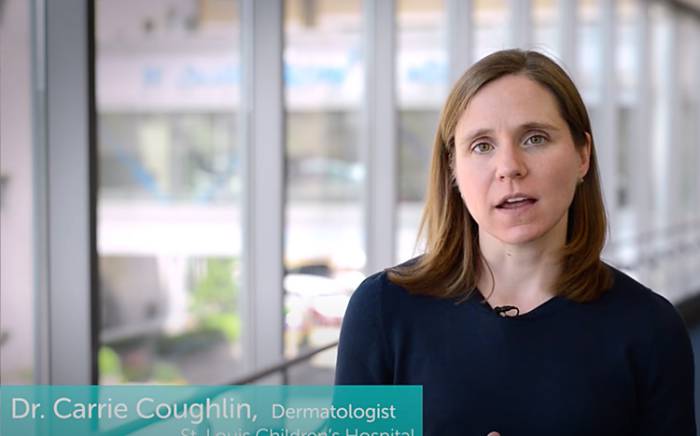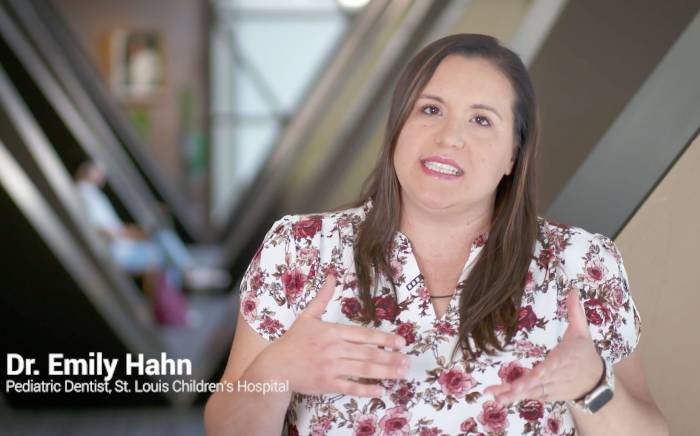Almost everyone who meets Aiden Bailey has the same reaction. “This kid is something special,” they say. Or, “he is one in a million!” Why? Despite countless hospitalizations, surgeries, procedures and medical emergencies, he always has a smile on his face. And no matter how poorly he feels, he always exudes unbridled joy, enthusiasm, and energy. And it’s not just his magnetic personality that sets him apart—his unique health conditions are unlike any other his many doctors and specialists have ever seen before.
Eight-year-old Aiden was born without a palate, only one eye, one nostril and one lip. He developed lung problems when he was three months old. After extensive genetic testing at several major medical centers, the only thing doctors know about Aiden’s condition is that they really don’t know how to define it.
 “Aiden’s lungs were like the lungs of a child with cystic fibrosis—even though he didn’t have cystic fibrosis,” says his grandmother, Lori Gearhart. When he was a baby, he developed a phlegm-filled pneumonia that evolved into an irreversible lung disease called Bronchiolitis obliterans. By the time he was three, his doctors believed that a lung transplant was Aiden’s only option for survival.
“Aiden’s lungs were like the lungs of a child with cystic fibrosis—even though he didn’t have cystic fibrosis,” says his grandmother, Lori Gearhart. When he was a baby, he developed a phlegm-filled pneumonia that evolved into an irreversible lung disease called Bronchiolitis obliterans. By the time he was three, his doctors believed that a lung transplant was Aiden’s only option for survival.
Aiden was placed on the lung transplant list on January 10, 2008. He and his grandmother moved from their hometown in Iowa to St. Louis to be on standby for a transplant at St. Louis Children’s Hospital. He received his new lungs on October 18, 2009. “We were lucky he got his lungs so quickly, says Gearhart. There was actually nothing left to his right lung. His doctors believed that it had probably stopped functioning when he was two years old.”
As Aiden’s doctors worked together to resolve the issues with his airway, he endured months of hospitalization, repeated bronchoscopes, suctioning and additional surgeries. “Everyone on the case was very reluctant to go back in and restore Aiden’s lungs to the normal anatomical arrangement—it was so high risk,” says Dr. Pirooz Eghtesady, co-director of the St. Louis Children's and Washington University Heart Center. “Eventually, we all agreed it was the only option for Aiden. His surgery lasted almost 14 hours. We took the right lung out of his left chest and put it back in the right side. We also reconstructed his pulmonary artery and vein.”
“Aiden feels one hundred percent at home at St. Louis Children’s Hospital,” says Gearhart. “We have spent so much time here, and he knows so many people, I knew it was the best place for him to be for such a difficult surgery. Dr. Eghtesady answered all of Aiden’s questions and never once talked down to him—he answered in the way that Aiden needed to hear it.”
“This had never been done before,” says Dr. Eghtesady. “A surgery of this magnitude required a creative approach. We all worked together to develop a Plan A, a Plan B, and a Plan C, along with several contingencies if problems arose during surgery. Because we have direct access to so many specialists at St. Louis Children’s Hospital, we can call on our colleagues to discuss options and think things through together. Fortunately, Aiden did remarkably well—he was able to leave the hospital within three weeks.”
Aiden—and everyone who cares for him—is relieved he no longer has episodes of respiratory arrest because of his airways. However, he and his medical team must still manage the issues surrounding lung transplantation, such as risk of infection or rejection. “When we are at St. Louis Children’s Hospital, we need to be here. We just take every day as it comes and try to make some nice memories. We are so grateful for all of the wonderful people and how they have gotten to know us on a personal level. There were really no odds on whether or not this surgery would work—yet here we are.”










